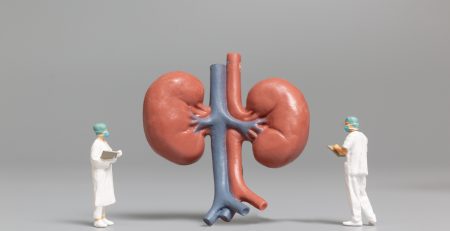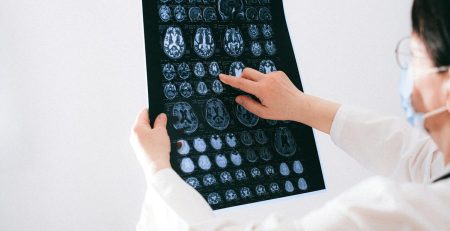The Memory Condition That’s Not Alzheimer’s
Patients experiencing memory lapses often find themselves seeking a second opinion, especially when referred to specialists like Dr. David Jones, a neurologist at Mayo Clinic in Rochester, Minnesota. Many of these patients exhibit common memory issues—frequently repeating questions or misplacing everyday items. Initial diagnoses often suggest Alzheimer’s disease or another neurodegenerative condition. However, Dr. Jones and his team frequently uncover a different cause: a slow-progressing neurodegenerative syndrome that primarily impacts memory, with specific effects on the brain’s limbic system.
This condition, termed limbic-predominant amnestic neurodegenerative syndrome (LANS), offers a different prognosis than Alzheimer’s. “Memory problems aren’t always indicative of Alzheimer’s disease,” Dr. Jones explains. “It’s critical to broaden the differential diagnosis, seeking clarity and precision in patients presenting with cognitive difficulties later in life.”
What is LANS?
LANS is a newly characterized condition that affects memory but progresses slowly and is predominantly limited to the limbic system. Unlike Alzheimer’s, which typically involves widespread brain degeneration, LANS is confined to the limbic system, specifically targeting areas responsible for memory and emotional processing. One of the key factors contributing to LANS is a buildup of TAR DNA-binding protein 43 (TDP-43), which leads to a condition called limbic-predominant, age-related TDP-43 encephalopathy (LATE-NC). This form of degeneration first affects the amygdala, followed by the hippocampus, and eventually the middle frontal gyrus. LATE-NC has been found in nearly 40% of individuals over the age of 85 during autopsy studies.
In contrast, neurodegenerative syndromes arising from neocortical damage, such as Alzheimer’s disease, often involve broader cognitive impairments beyond memory, including changes in language and executive functions.
Diagnostic Criteria for LANS
The newly proposed clinical criteria for LANS provide healthcare professionals with guidelines for diagnosis. These criteria are divided into core, standard, and advanced features:
Core Features:
– The patient must present with a slowly progressing amnestic syndrome lasting two years or more.
– The condition should not be attributable to any other cause that would better explain the cognitive decline.
Standard Features:
– The patient is typically older than 75 years.
– They may have mild cognitive impairment or mild amnestic dementia (scoring ≤ 4 on the Clinical Dementia Rating Sum of Boxes, CDR-SB).
– MRI scans often show hippocampal atrophy that is more pronounced than expected based on the patient’s clinical condition.
– Semantic memory is mildly affected.
Advanced Features:
– PET imaging shows limbic hypometabolism, with no evidence of significant neocortical degeneration.
– There is a low likelihood of neocortical tau pathology, which is common in Alzheimer’s.
These criteria provide varying degrees of certainty for diagnosing LANS. Patients with the highest likelihood of having LANS exhibit all core, standard, and advanced features. Moderate-likelihood cases meet the core features alongside at least two standard and one advanced feature.
Understanding the Distinction: LANS vs. Alzheimer’s
One of the most reassuring aspects of a LANS diagnosis is its more gradual progression compared to Alzheimer’s. In LANS, the neocortex—the region responsible for higher-level cognitive functions—remains relatively unaffected for an extended period. Language, spatial awareness, and executive functions are preserved, while memory decline is the primary symptom. This localized degeneration allows for a milder cognitive decline that can remain stable for several years.
Research and Future Directions
Dr. Jones and his colleagues developed the LANS diagnostic criteria after reviewing data from 218 autopsied patients involved in the Mayo Clinic Study of Aging and the Alzheimer’s Disease Neuroimaging Initiative. The study involved neuropathological assessments, brain imaging (MRI and PET), and analysis of cerebrospinal fluid biomarkers.
Despite the advances in understanding LANS, there are still gaps in the diagnosis and treatment. Currently, no biomarkers for LATE-NC, the underlying pathology of LANS, are available. Further research is needed to develop clinical tools and biomarkers that can accurately identify TDP-43 pathology during life.
In 2023, the National Institute on Aging held a workshop on LATE, where researchers discussed diagnostic criteria and future directions for understanding the disease. Many expect that LANS criteria will be included in forthcoming publications as part of broader efforts to clarify the syndrome’s role in cognitive decline.
Implications for Primary Care Providers
Given the complexity of dementia-related syndromes, early recognition and nuanced evaluation are essential. Dr. Sudha Seshadri, founding director of the Glenn Biggs Institute for Alzheimer’s and Neurodegenerative Diseases at the University of Texas, emphasizes that LANS requires careful assessment. Primary care physicians can play a crucial role by recognizing early signs and performing initial screenings, such as the Montreal Cognitive Assessment (MoCA), which takes about 10 minutes to complete.
Blood tests for biomarkers such as p-tau 217, MRI scans to evaluate hippocampal atrophy, and a thorough evaluation of reversible causes (e.g., vitamin B12 deficiency) can also guide early detection. Additionally, tools like the Mini-Cog or the General Practitioner Assessment of Cognition are useful during routine visits, especially if a patient or caregiver raises concerns about memory.
Collaboration between primary care physicians, geriatricians, and neurologists is vital, particularly because there aren’t enough behavioral neurologists to meet the growing demand for specialized dementia assessments. Educating and equipping primary care clinicians with diagnostic tools can help streamline the evaluation process and facilitate earlier diagnosis.
The Future of LANS Diagnosis and Treatment
As LANS becomes more widely recognized, its prevalence may increase. Currently, around 10% of patients at dementia clinics could fit the LANS profile. With ongoing research and clinical trials, there is hope for better diagnostic markers and treatments that target LATE-NC.
In the meantime, awareness of this condition can help primary care physicians differentiate between Alzheimer’s and other memory-related disorders. Through timely diagnosis and intervention, patients can receive more accurate care and potentially experience a slower progression of their cognitive decline.











